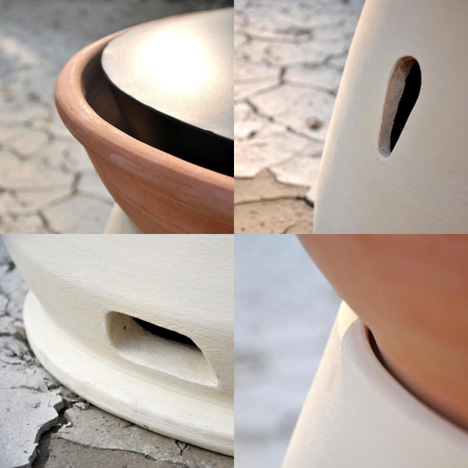 Photography by Brit Leissler for Core77
Photography by Brit Leissler for Core77
Vienna Design Week celebrated it's fifth year with exhibitions, venue-specific installations, talks, and workshops throughout the capital. In an effort to differentiate itself from the numerous design festivals taking place in Europe the same month, Austrian organizers focused on showcasing emerging local designers and the flourishing scenes of Central and Eastern Europe.
The theme of food dominated this year with several installation/performances exploring topics of food waste, food design, and urban gardening. On a similar tangent, we loved the theater behind Alfred Burzler and Thomas Exner's ice stool Ljod (Russian for ice) presented in a refrigerated room where visitors borrowed jackets to enter and viewed the piece with flashlights.
Many of Austria's old school manufactures—often family-run businesses that have operated for generations—took the opportunity to invite contemporary designers to reinterpret their products for exhibition. The most successful of these collaborations was designer Philippe Malouin's Hourglass for Lobmeyr. His piece features a series of measurements; the amount of time it takes for the sand to reach each increment mirrors the exact amount of time it took the artisan to engrave the line—nice!
» Checkout our gallery for more highlights!
(more...)





 Image courtesy of the
Image courtesy of the 
 Images and reporting by Ciara Taylor
Images and reporting by Ciara Taylor






 Charles and Ray Eames posing on a Velocette motorcycle, 1948, as seen in James Cohn & Bill Jersey's documentary Eames: The Painter and the Architect, ©2011 Eames Office, LLC.
Charles and Ray Eames posing on a Velocette motorcycle, 1948, as seen in James Cohn & Bill Jersey's documentary Eames: The Painter and the Architect, ©2011 Eames Office, LLC.



























